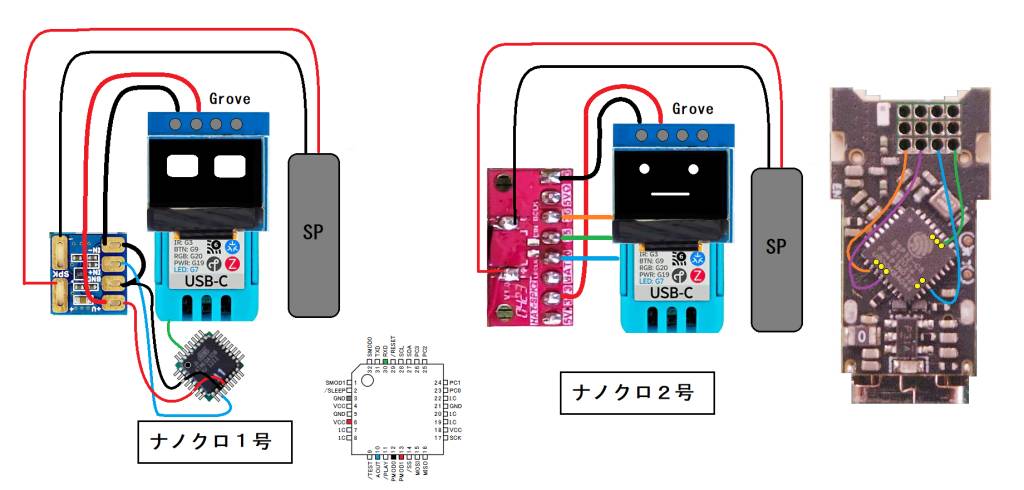A small product called NanoC6 was released. At first, I wasn't interested in it, but I started making it because I could attach an SSD1306 with a Grove terminal and because I had a small OLED called a 0.42-inch Mini OLED unit for M5Stack.
I was able to display the M5Avatar's face by installing an OLED, but I wanted to make a sound. Unfortunately, NanoC6 is RISC-V, so AquesTalk, a speech synthesis library for ESP32, is not supported. Therefore, we used the AquesTalk pico LSI, which is a speech synthesis LSI, but it was too large. Fortunately, there is a TQFP32 with a small mounting area, so I will use it. Attach it to a 32-pin QFP conversion board, cut it to an appropriate size, and attach it to the NanoC6. When you pull out one GPIO pin from the NanoC6 chip and input it to the LSI, AquesTalk makes a sound. However, I couldn't LipSync to M5Avatar's mouth, so I changed the face display to ESP32_Faces. This is number 1.
Now that I'm confident in pulling out the GPIO pins from the chip, I plan to add two more and use I2S to output sound. As a result of trial and error, I took out three from the chip and set them to MAX98357 of Speaker 2 Hat for M5StickC Plus. It didn't work at first, but after getting some advice and updating the ESP board and M5Unified to the latest version, it started working. Since I used M5Unified, it was difficult for me to implement ESP32_Faces, so I returned to M5Avatar. This is number 2. The second issue is Avatar's LipSync.
Finally, in issue 2, I decided to write the M5Unified sample program WebRadio_with_ESP8266Audio.ino. However, at this point, the programming environment for M5NanoC6 doesn't seem to be stable (perhaps due to my lack of understanding), and I'm at a loss as to whether to change the board to esp32 3.2.0-RC2 or 3.0.0-alpha3. Also, although the library ESP8266Audio to be loaded is 2.0.0, it seems to cause an error regarding i2s implementation (this is also a lack of understanding), so after receiving advice from my predecessors, I was finally able to complete the writing.
However, the M5Avatar disappeared and the system was in an unstable state, with reboots required. Furthermore, while rebooting repeatedly, M5Avatar appears and starts listening to the radio as if nothing happened. For now, let's say this is complete.1 / 3









Comments